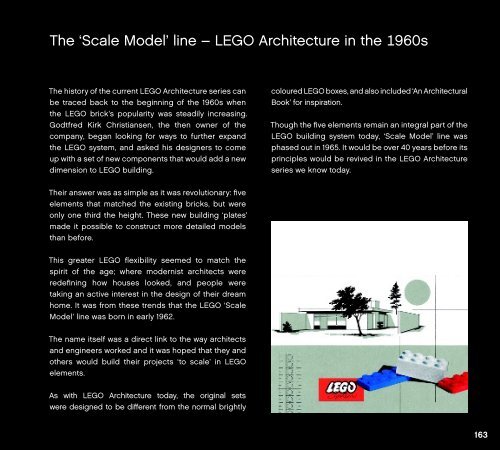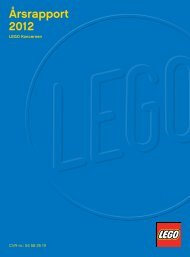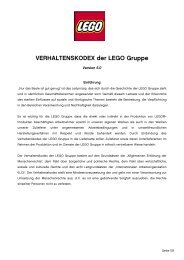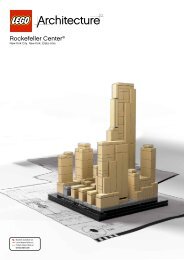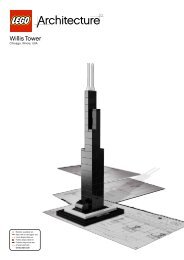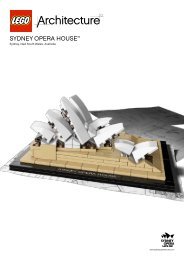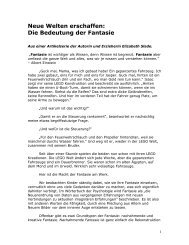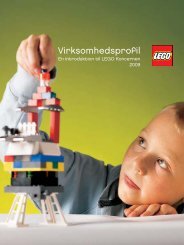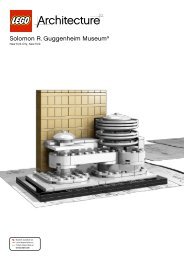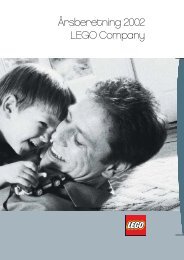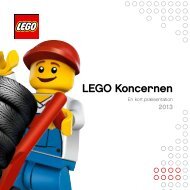2x - Lego
2x - Lego
2x - Lego
You also want an ePaper? Increase the reach of your titles
YUMPU automatically turns print PDFs into web optimized ePapers that Google loves.
The ‘Scale Model’ line – LEGO Architecture in the 1960s<br />
The history of the current LEGO Architecture series can<br />
be traced back to the beginning of the 1960s when<br />
the LEGO brick’s popularity was steadily increasing.<br />
Godtfred Kirk Christiansen, the then owner of the<br />
company, began looking for ways to further expand<br />
the LEGO system, and asked his designers to come<br />
up with a set of new components that would add a new<br />
dimension to LEGO building.<br />
Their answer was as simple as it was revolutionary: five<br />
elements that matched the existing bricks, but were<br />
only one third the height. These new building ‘plates’<br />
made it possible to construct more detailed models<br />
than before.<br />
This greater LEGO flexibility seemed to match the<br />
spirit of the age; where modernist architects were<br />
redefining how houses looked, and people were<br />
taking an active interest in the design of their dream<br />
home. It was from these trends that the LEGO ‘Scale<br />
Model’ line was born in early 1962.<br />
The name itself was a direct link to the way architects<br />
and engineers worked and it was hoped that they and<br />
others would build their projects ‘to scale’ in LEGO<br />
elements.<br />
As with LEGO Architecture today, the original sets<br />
were designed to be different from the normal brightly<br />
coloured LEGO boxes, and also included ‘An Architectural<br />
Book’ for inspiration.<br />
Though the five elements remain an integral part of the<br />
LEGO building system today, ‘Scale Model’ line was<br />
phased out in 1965. It would be over 40 years before its<br />
principles would be revived in the LEGO Architecture<br />
series we know today.<br />
163


